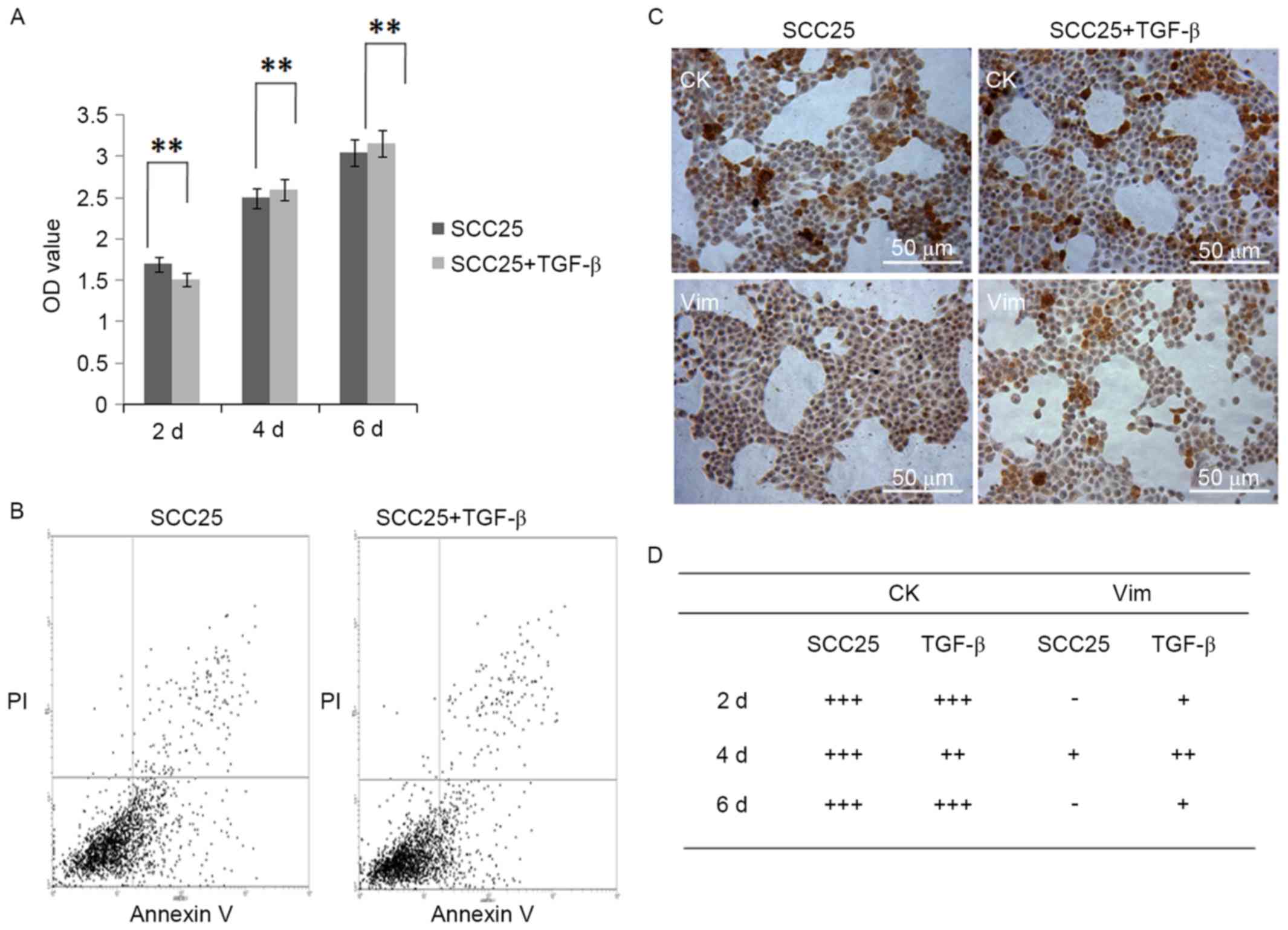Utilization of E-cadherin by monocytes from tumour cells plays key roles in the progression of bone invasion by oral squamous cell carcinoma
- Authors:
- Published online on: June 23, 2017 https://doi.org/10.3892/or.2017.5749
- Pages: 850-858
-
Copyright: © Quan et al. This is an open access article distributed under the terms of Creative Commons Attribution License.
Metrics:
Total
Views: 0 (Spandidos Publications: | PMC Statistics:
)
Total PDF Downloads: 0 (Spandidos Publications: | PMC Statistics:
)
Abstract
E-cadherin (E-cad) is recently reported to be expressed in early stages of osteoclastogenesis, and blocking E-cad with neutralizing antibodies decreases osteoclast differentiation. Since our previous research demonstrates the loss of E-cad protein in the bone invasion by oral squamous cell carcinoma (OSCC), we hypothesize that E-cad may be utilized by monocytes to fuse and differentiate into osteoclasts. Two research models are used in the present study to explore our hypothesis. On one hand, we use OSCC cells of SCC25 to establish an animal model of bone invasion by OSCC, and investigate whether E-cad protein disappears in vivo; on the other hand, we use the indirect co-culture model of SCC25 and RAW 264.7 cells, with the treatment of transforming growth factor-β1 (TGF-β1), and observe whether the decreased E-cad protein is ‘hijacked’ in vitro. Results showed the animal model of OSCC with bone invasion was successfully established. Immunohistochemistry (IHC) found similar changes of E-cad protein, which was weakly stained by tumour cells. By using 5 ng/ml of TGF-β1, we confirmed the artificial epithelial-mesenchymal transition (EMT) of SCC25 cells, with changes of EMT marker expression and cell morphology. Real-time PCR showed E-cad mRNA decreased in SCC25 while increased in RAW 264.7 of the indirect cell co-culture model, and immunofluoresence (IF) observed the evident switch of E-cad staining from SCC25 to RAW 264.7. With the supplement of receptor activator of NF-κB ligand (RANKL), tartrate-resistant acid phosphatase (TRAP) and F-actin staining confirmed the increased number of osteoclasts. Taken together, our study found the switch of E-cad protein in the progression of bone invasion by OSCC. The loss of E-cad in tumour cells may be utilized by monocytes to differentiate into osteoclasts, thus further explaining the underlying mechanisms of bone invasion by OSCC, which may supply clues for future molecular biotherapies.


















